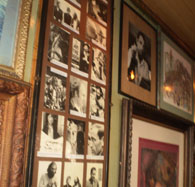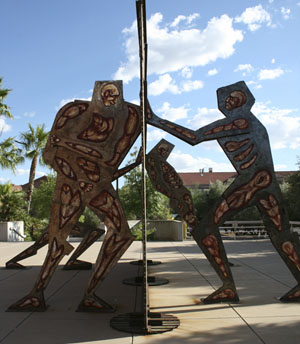
Sample Assignments | Spontaneous Composing Log
Spontaneous Composing Log
In the spontaneous composing log assignment, students record their observations as participants in the spaces and places they regularly inhabit, whether that be their favorite coffee shop, their homes or workplaces, or even a daily bus stop. Using the medium of their choice, students compose two entries per week with the intention of capturing enough detail to remember the event; they are painting a picture of places, spaces, and interactions between people in these locations.
I hold conferences with students three times during the semester to discuss their logs. In preparation for their conferences, students select a portion of an entry to share: an experience that holds relevance for them. During these conferences, I work with students to help them articulate what the experience says about the nature of human interactions within that space/place or what the experience says about their own relationship to that space/place. In other words, we work to find out the larger issues to be gleaned from the experience. The entry then informs future lines of inquiry for the student. While I’ve written my assignment to work toward a visual/spatial argument at the end of the semester, the assignment can be adapted for other genres as well.
The design encourages students to consider the distinctions between writerly versus readerly texts, since they are working to transform a writerly text into a readerly one (Flower, 1979). Moreover, students learn what it means to compose for three different audiences and in different mediums and genres.

Sample Log Entry: I wrote this on 12-4-08 when I took my students to the “Border Dynamics" sculpture on the University of Arizona campus.
Push and pull—that’s what I see in this sculpture made of metal and human tissue contrived from human hands. Towering over me, they make me realize my small size, my humble position in this human struggle. Four bodies, sexless bodies without identity or gender, stand at a border working from different levels of participation. Complacent. Persistent. Strong. Towering. White bones and red tissue serve as markers for the frailty of human experience, and the rust of the metal fence suggests a sense of timelessness—a struggle that has happened over a long period of time. Each of the figures in the sculpture is surrounded by feet upon feet of empty space; ten of me could fit between each of them. They remain divided but look so similar standing there, towering stacks of bones and blood, pushing, complacent.
For the full assignment, click here.